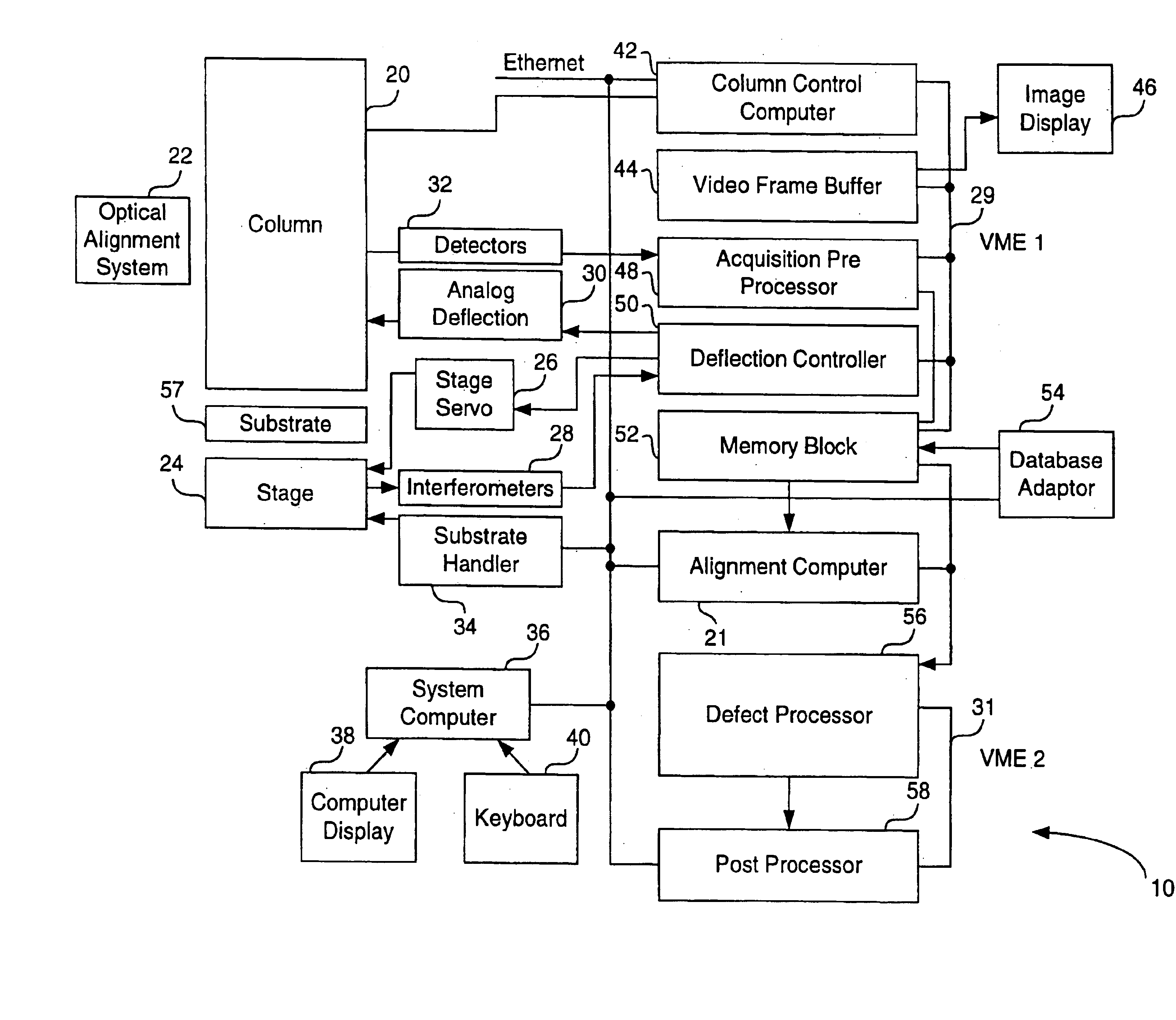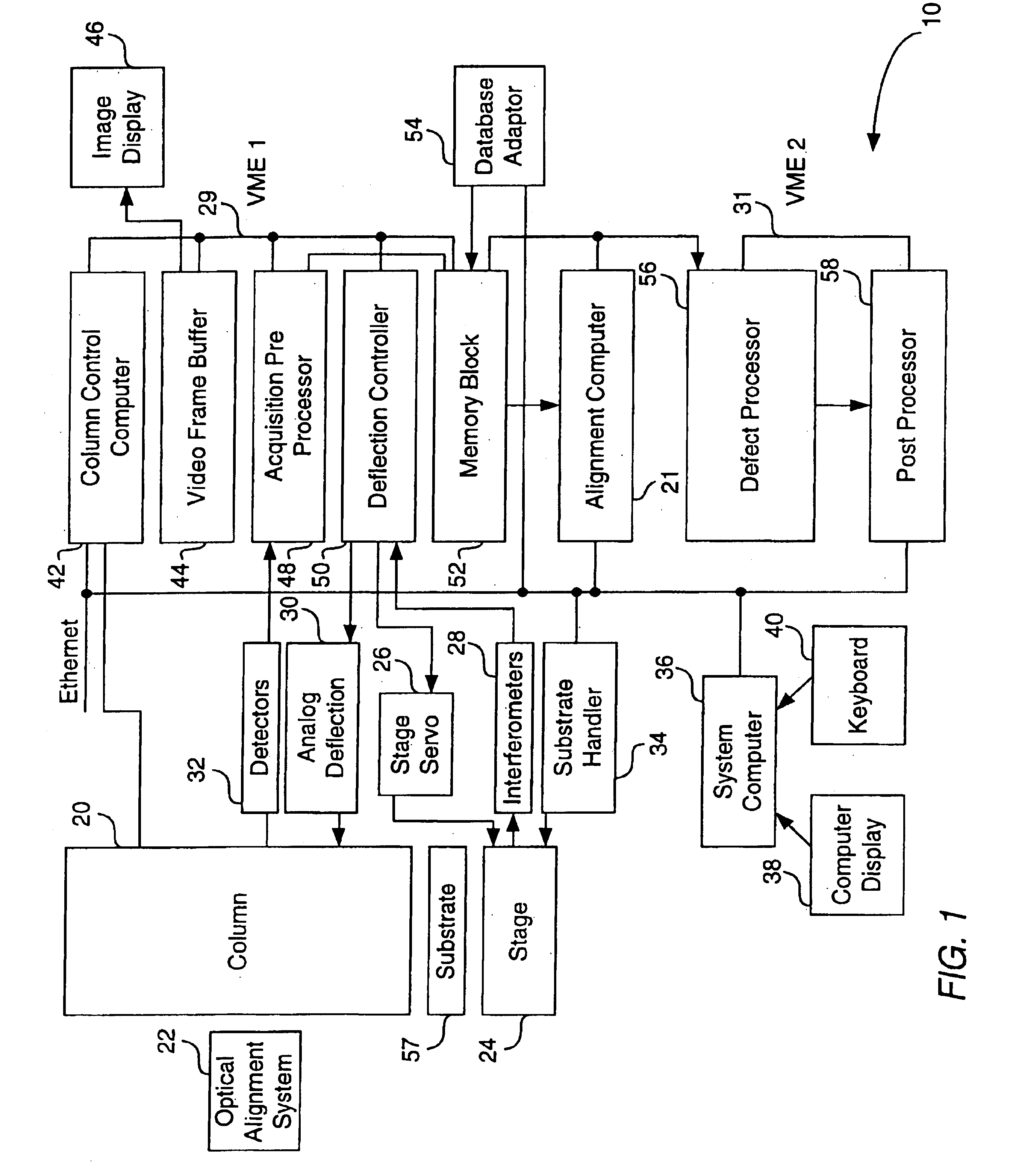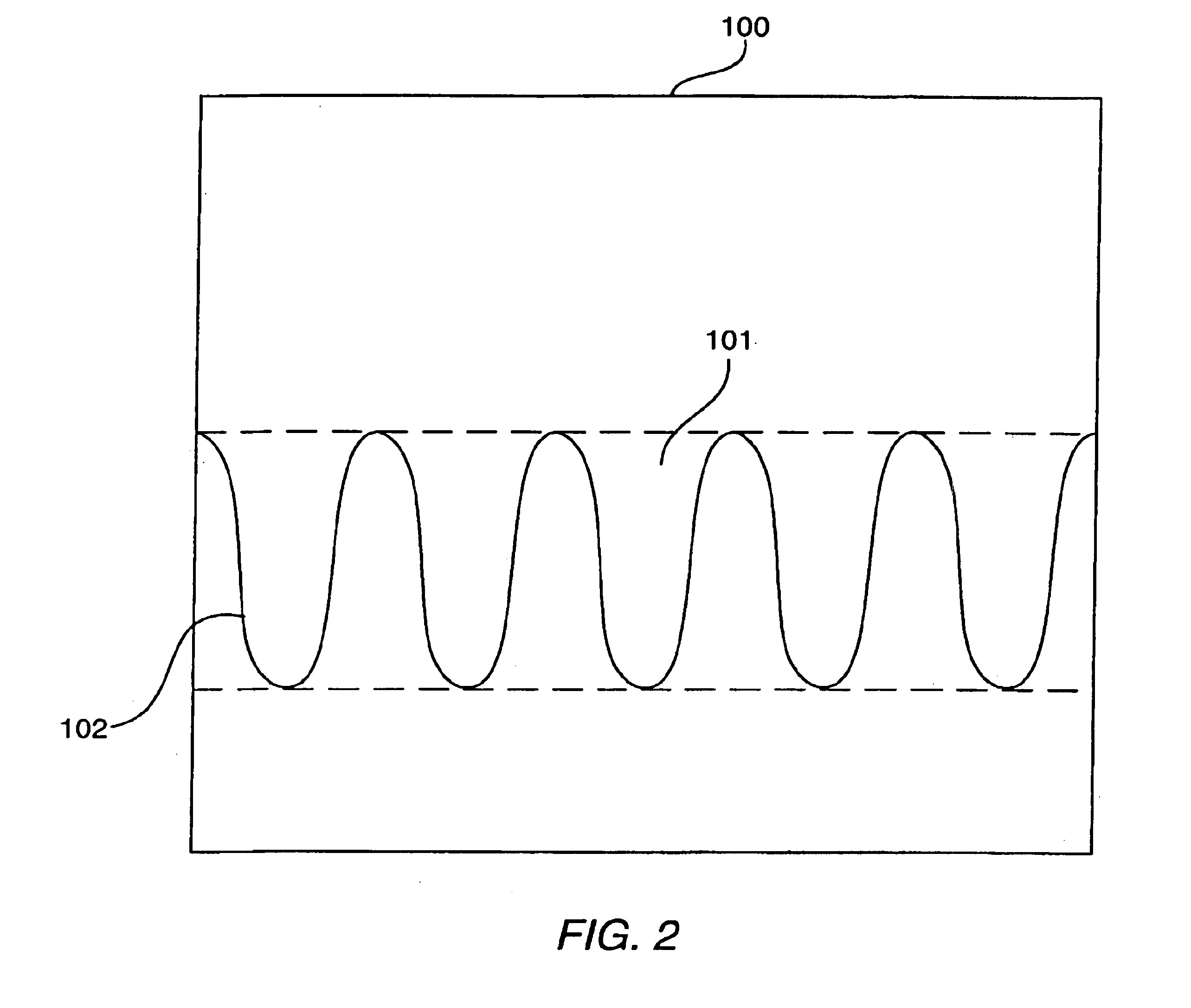Described in this section is an exemplary test
chip that is specifically designed to take full
advantage of the present invention. It should be recognized, however, that the specific design described herein is exemplary only and that many other designs or configuration are possible within the scope of the present invention.
. It should be recognized, however, that the specific design described herein is exemplary only and that many other designs or configuration are possible within the scope of the present invention.
Several embodiments of the present invention are described herein in the context of exemplary multilevel
integrated circuit structures including semiconductor structures and overlying metallization or other interconnects using various levels of conductors that arc separated from each other and the substrate by
dielectric layers. As is well known in the art, in such multilevel structures, a first conductor (M1) and a second conductor (M2) can be connected by vias formed through an interlayer
dielectric (ILD). Similarly, contacts can he formed between the conductors and the substrate. The defect detection
system of the present invention is advantageously able to detect opens, intra-layer shorts (within M1 or M2) or interlayer (between M1 and 42) shorts caused by errors occurring systematically or randomly during the manufacturing process.
In addition, specific embodiments of the present invention are also able to detect defects caused by particular process steps, such as lithographic steps, dry etch steps, deposition steps, or a chemical mechanical
polishing (CMP) process. As is well known in the art, the CMP process is often used to planarize structures that build up during multilevel deposition processes. These structures can be used as damascene interconnects, conductive plugs, or for other purposes. The CMP process is expected to become even more important as the
semiconductor industry shifts to
copper metallization, since
copper cannot be easily dry-etched (the etch products being non-volatile), but is readily processed using CMP. However, the CMP process may polish away functioning circuit parts through dishing (leading to opens) or
copper smearing (leading to shorts) when the circuit
layout changes drastically in density,
pitch and or in the horizontal
aspect ratio (length: width). The defects created by CMP process are preferably detected during the inspection process.
FIGS. 4a and 4b illustrate a semiconductor
wafer 200 comprising a die array 202 that is prepared in accordance with the principles of one embodiment of the present invention. As illustrated in FIG. 4b, the array 202 may be comprised of a plurality of test dies 204 and a plurality of actual product dies 206 containing intended integrated circuitry. As will be described below, the test dies 204 allow defect location, defect identification, defect type and defect density through in-line inspections during the actual manufacturing process of integrated circuits.
The ability to detect defects in line (i.e., during the manufacturing process) is a significant
advantage of the present invention. Unlike
functional testing of semiconductor devices performed on completed wafers by
wafer probing methods, the present invention can perform testing in line. This results in better and more timely information for the engineers controlling the manufacturing the process, and provides them with an opportunity to service machinery or alter
process conditions to improve yield, before many devices are lost as
scrap. By contrast if the engineer were to wait until
processing of the devices were completed, millions of dollars may be lost due to poor yield because of the
delay. Moreover, the test methodologies of the present invention could be used as part of an
Advanced Process Control ("APC")
system in which data from the testing process is fed to automated control systems that improve process yield with little or no human intervention, based on
software algorithms that take into account, the equipment and process technology used in the manufacturing, process. As an example, test structures designed to detect CMP overpolish could provide data that automatically feeds back to the CMP process and causes the process to be modified such that
polishing time is reduced, or pressure on the
polishing pad is diminished.
 Login to View More
Login to View More  Login to View More
Login to View More 


